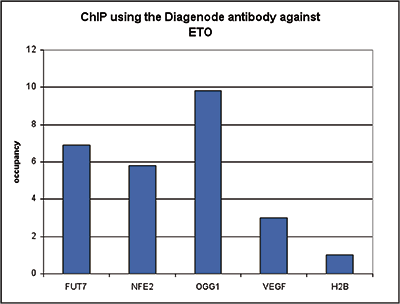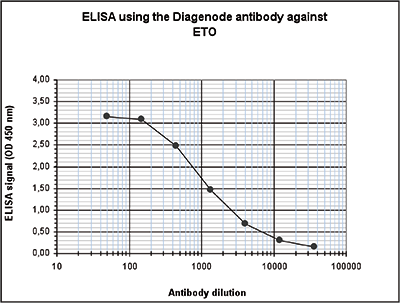ETO (UniProtKB/Swiss-Prot entry Q06455) is a transcriptional regulator which belongs to the myeloid translocation gene family. ETO exerts its function by interaction with transcription factors bound to promoters and binding to histone deacetylases. It recruits a range of corepressors to facilitate transcriptional repression. The t(8;21)(q22;q22) translocation is one of the most frequent karyotypic abnormalities in acute myeloid leukaemia. This translocation produces a chimeric gene made up of the 5’-region of AML1and the 3’-region of the ETO gene. The chimeric protein is thought to associate with the nuclear corepressor/ histone deacetylase complex to block hematopoietic differentiation.







